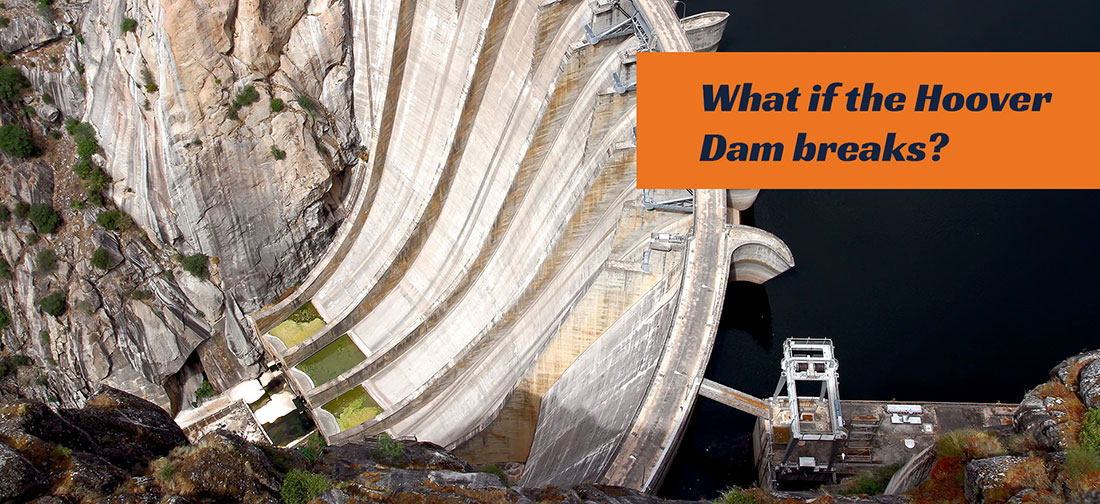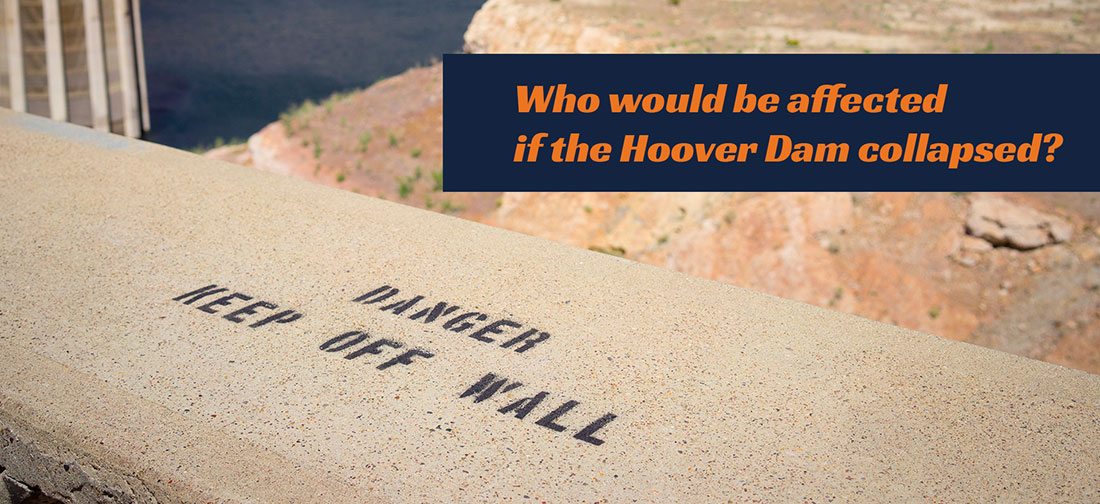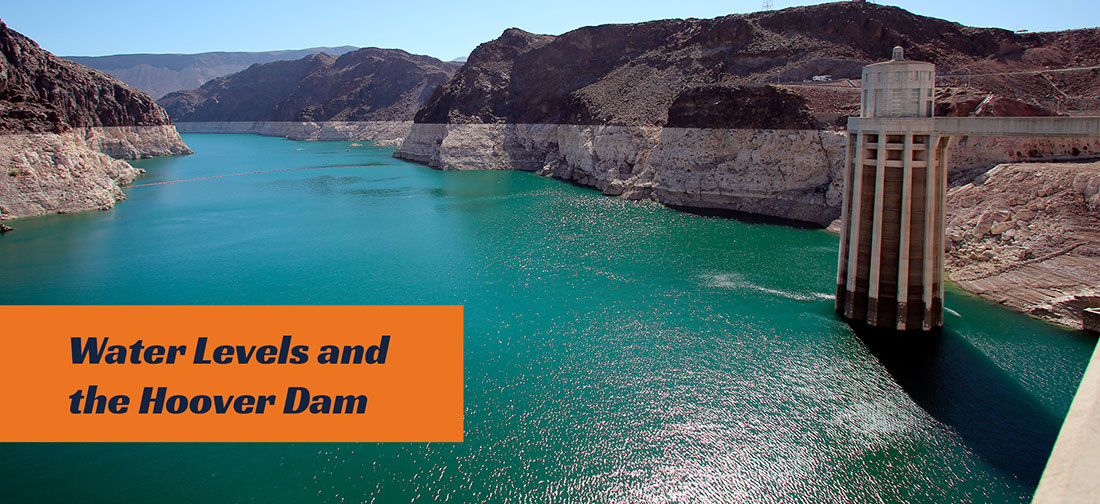What would happen if the Hoover Dam stopped?
The Hoover Dam is one of the most majestic manmade structures in the country. It was a feat of engineering at the time of its construction, and it’s still one of the most impressive works of engineering today. The Hoover Dam stands over 221 meters high, bringing power to over one million people. Although the Hoover Dam is impressive by any standard, what would happen if it failed?
About the Hoover Dam
When you go on a Vegas kayak tour or partake in other outdoor activities in Las Vegas, you’ll have the opportunity to see the Hoover Dam up close! The Hoover Dam is a destination for outdoor enthusiasts from around the world. The dam was built in 1931, and today it is one of the most popular Las Vegas activities for those wanting an outdoor adventure. Along with visiting the dam by kayak, you can also go swimming and hiking at the Hoover Dam and learn about its history. The Hoover dam was built on the Colorado River, and it straddles the border between Nevada and Arizona. The dam is 726.4 feet high, over 170 feet taller than the Washington Monument. The dam ranges from 45 to 660 feet thick from top to bottom, about the length of two football fields. While that might seem like a lot of concrete, the Hoover Dam needs all that strength to retain a maximum of 45,000 pounds of water pressure per square foot at its base.
What if the Hoover Dam breaks?
The Hoover Dam was constructed nearly 100 years ago, but it is still a sturdy structure today. Even so, there would be significant problems if the dam broke. The Hoover Dam has a reservoir created by the neighboring Lake Mead, and the dam would be breached if the Hoover Dam collapsed, which would cause widespread flooding. Just as the Hoover Dam is a massive structure, Lake Mead is an enormous reservoir. In fact, it is the largest reservoir in the nation. Lake Mead can contain the entire annual water flow of the Colorado River for up to two years, and it supports all kinds of Las Vegas activities. In 2016, Lake Mead held nearly 10 trillion gallons of water. However, drought conditions in the Western US have lowered the lake’s volume to 3.5 trillion gallons of water in the past few years. Even though that number may seem low compared to the dam’s maximum volume, it is still enough to cause flood damage.

What could happen to Hoover Dam?
There are many different possible causes for the Hoover Dam to break. Regardless of the cause, an incredible amount of water could be released if the dam was compromised. Even the 3.5 trillion gallons that are currently in Lake Mead, which is relatively low based on the lake’s history, could cause severe flooding. That amount of water could cover an area of about 10 million acres, which is the entire state of New Jersey, and even more acreage! Any town and city in the water’s path would be underwater, and fields would be destroyed. The damage to residences and businesses in the vicinity would be enormous. Some of the major cities that would be affected by a breach of the dam include Laughlin, Nevada, Lake Havasu, Arizona, Yuma, Arizona, Needles, California, and San Luis Rio, Colorado, which is a border community in Mexico. The catastrophe would also impact the Mojave National Preserve and multiple communities in southern California. Some of the communities in the surrounding area have experienced flooding from the Colorado River in the past, but never to the extent that they would see if the Hoover Dam collapsed. Those areas were prone to flooding even before the Hoover Dam was constructed in the 1930s.
Who would be affected if the Hoover Dam collapsed?
If the Hoover Dam collapsed, it would have an impact on many people in the area. Millions of people depend on Lake Mead and the Hoover Dam for water and electricity. Lake Mead is one of the region’s largest and most critical sources of water. It supplies about 25 million people with water in Boulder City, Las Vegas, North Las Vegas, and Henderson, all Nevada’s cities. In addition to cutting off water supplies for homes and businesses in the area, a dam collapse would destroy all the irrigation water supplies for farms in the Imperial Valley. Thanks to a dependable source of water from the Colorado River, farms in the Imperial Valley have produced over one billion dollars worth of crops each year. Today, farms in the area cover over a half-million acres.
You may be surprised to learn on a Hoover Dam kayak tour that the Hoover Dam is also a major power source for people and commercial operations in the area. It may be surprising to learn, but the Hoover Dam was mainly constructed to bring electricity to people in the area. Today, the Hoover Dam supplies about 1.3 million people with hydroelectric power. The dam generates about four billion kilowatt hours of power each year, reaching communities in Arizona, California, and Nevada.

What could cause the Hoover Dam to fail?
There are many possible reasons why the Hoover Dam might fail. One of the biggest concerns is a severe and prolonged drought, which has threatened the region for the past 20 years. Over the past few decades, droughts have depleted the Colorado River’s water levels and its two primary reservoirs. If the drought continues, millions of people in the US could be without water and electricity. Along with Lake Mead, one of the other largest reservoirs the Colorado River feeds into is Lake Powell. Together, the reservoirs provide hydroelectric power for over one million residences and businesses. Along with water, the Hoover Dam also provides water for more than 25 million people. If water levels fall critically low, which is less than 150 feet, the Hoover Dam won’t be able to get any power from its reservoirs.
Water Levels and the Hoover Dam
If the water levels at the Hoover Dam fluctuate, you might be wondering what the big deal is. After all, changing water levels don’t seem to impact your ability to go kayaking in Vegas. Water level changes in the Hoover Dam are usually subtle and happen over a more extended period unless there is a major storm or flood. You may not have personally observed the dam’s water levels changing much over time, especially if you’re not a resident of Las Vegas or the surrounding areas. However, water levels have fallen considerably since the 1990s. Then, water levels in the reservoir were at 100 percent, and today, they are at just 30 percent capacity. It takes years for the reservoir to replenish its water levels, which means it would take a long time to return to the 100 percent mark. If water levels fall below 150 feet, water can’t pass through the dam, which means it becomes a dead pool. Water and power can’t be delivered if that happens.

Although the Hoover Dam is an impressive engineering feat, there is a risk of problems with the dam. You can learn all about the dam and its power by when you go kayaking in Vegas with Blazin’ Paddles today.
